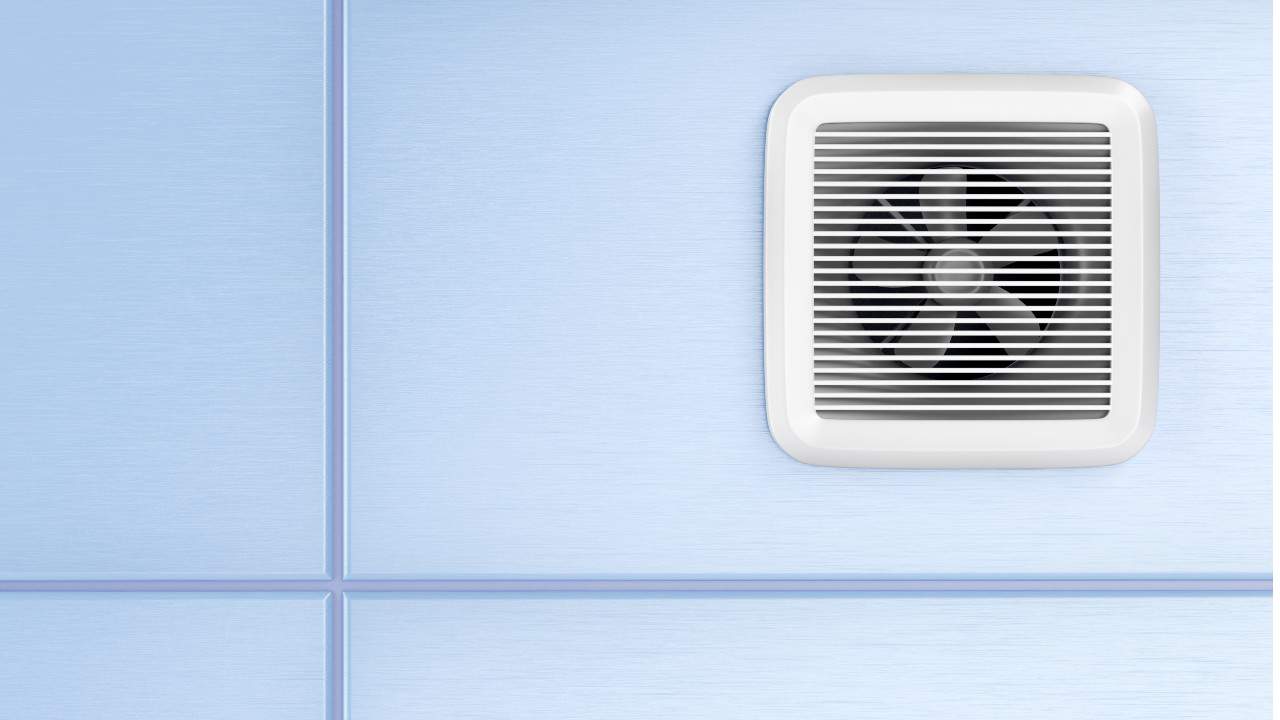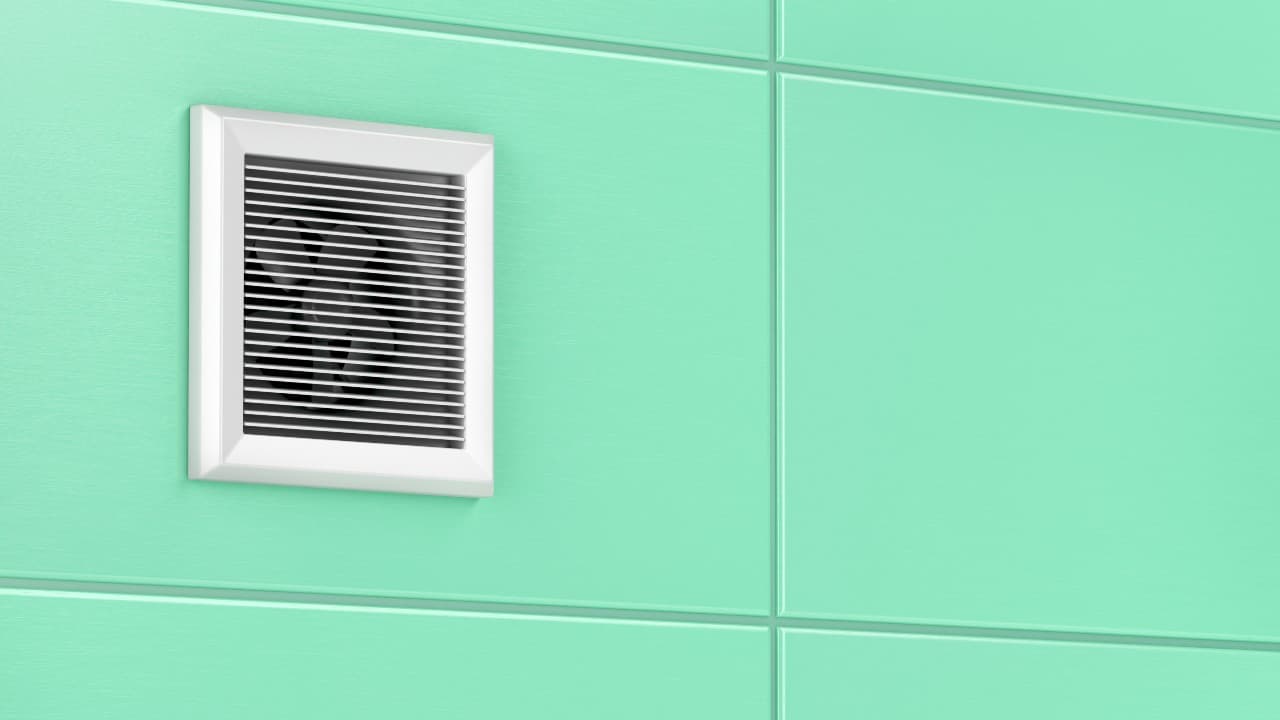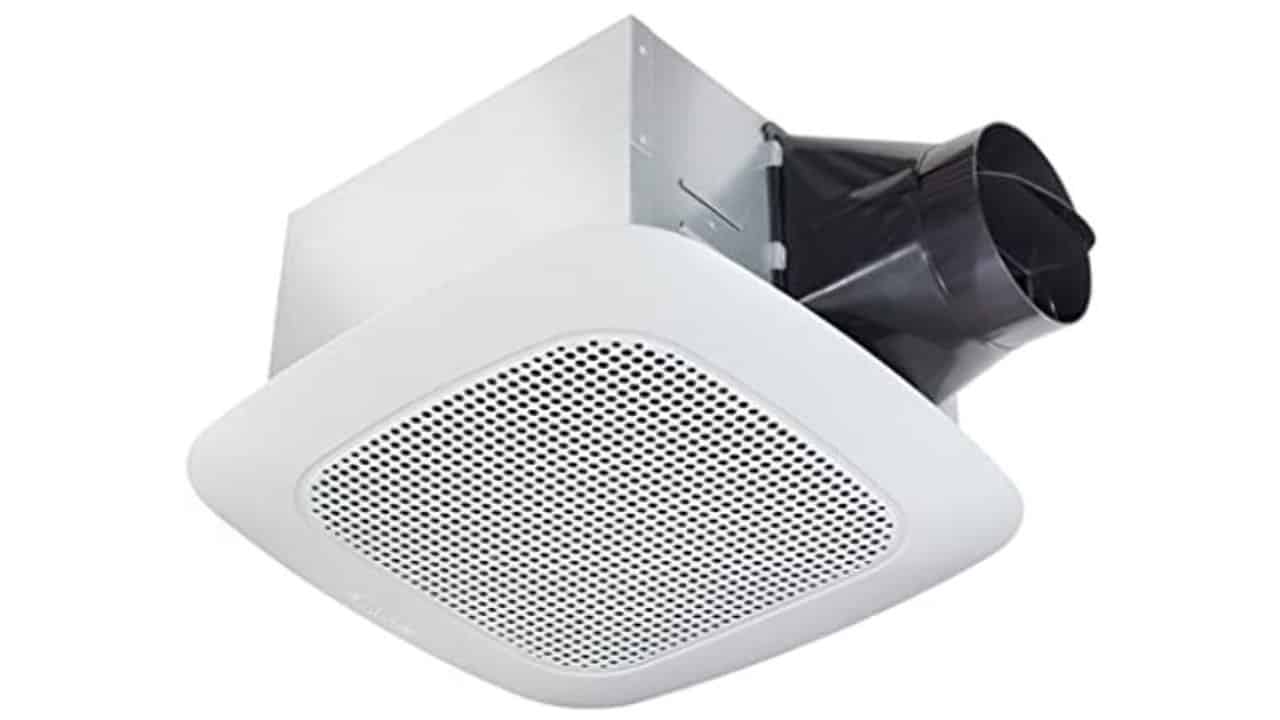Whether you are buying a house or building a new one from scratch, or have started remodeling your home, you should not forget about proper bathroom ventilation.
While there are many things in and around your bathroom that can be an easy or fun DIY project, you can install tiles on your bathroom floor or even replace the toilet or mount a shower or sink, or even bathroom cabinets. However, setting up a bathroom fan and vents is best left to the professionals unless you know exactly what you are doing.
Even so, you should get to know about different bathroom exhaust fan venting options and their pros and cons so you can make an educated decision about what works for your needs and fits your budget. There is one option that you can tackle yourself, but more on that in just a few moments.
Keep reading this article to learn about the various bathroom exhaust fan venting options, their pros and cons, and decide which option works the best for you.
Contents
What Bathroom Fan Venting Options Are There?
In general, various exhaust fan venting options are distinguished by their location. There are five of them in total: wall venting, roof venting, low-profile fan installation, soffit venting, and the co-called through-the-wall venting option. Each one has its perks and downsides and different conde limitations and regulations.
For instance, the first three options are the most prevalent, while the low-profile vent setup is not that common. In addition, using a soffit vent for a bathroom fan is forbidden in some parts of the world, so look into your local rules and regulations before deciding on the option you will pick as your bathroom venting.
Venting From Ceiling to Wall
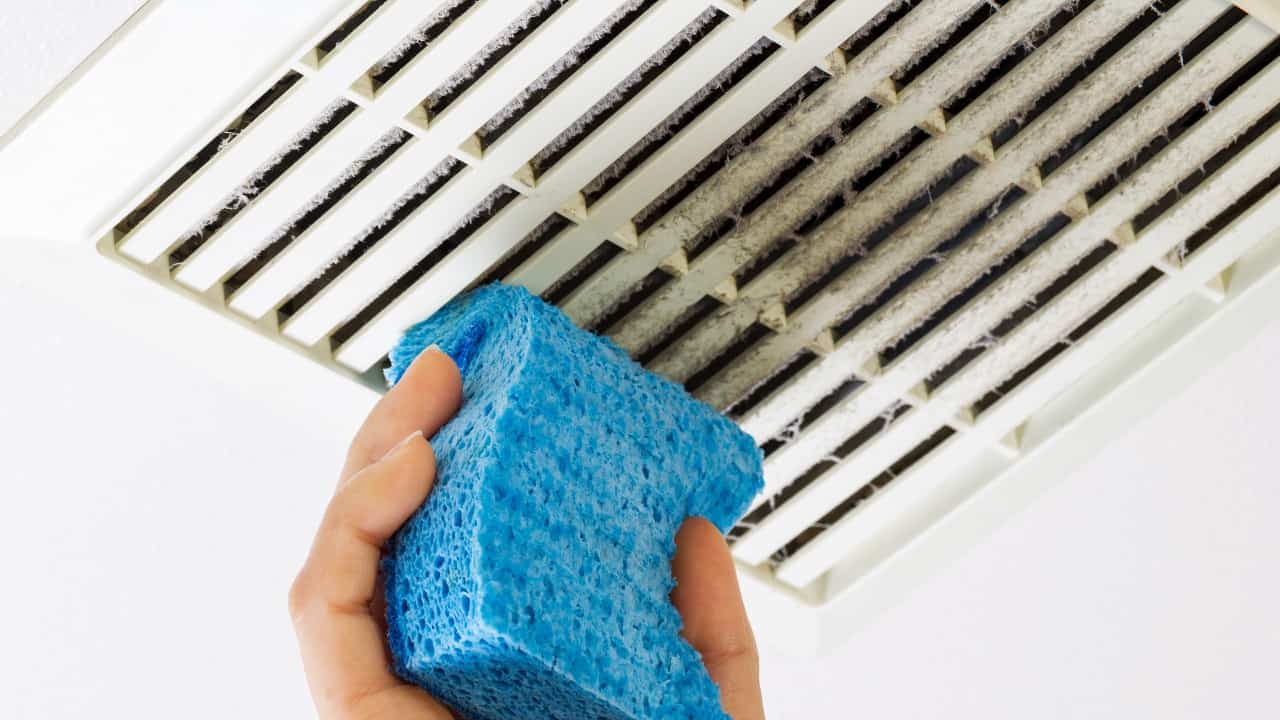
When it comes to venting your bathroom correctly, this option is the most common one. A bathroom fan is installed on the ceiling while the exhaust vent leads to the outside. It doesn’t matter if the vent goes through several twists and turns before it reaches the outside – as long as these two key elements are present, you are using the ceiling-to-wall venting option.
The vent should have a vent hood with a flapper on the outside. Its purpose is to keep rain, insects, and other pests from getting into the venting hose. However, even with this protection system, this option is not entirely immune to animals.
Birds are the most commonly seen intruder as they tend to build their nests inside the vants and thus slow down or completely block the airflow. In addition, a bird’s nest can make your bathroom fan completely ineffective.
This venting method is also vulnerable to rain – though not as much as a roof vent installation is. You can minimize the risks of rain intrusion by ensuring that the exterior vent is adequately sealed with caulking and that the vent’s flaps are intact.
If you have a small bathroom, check out our post on the best bathroom exhaust fans for small rooms.
Roof Vent Installation
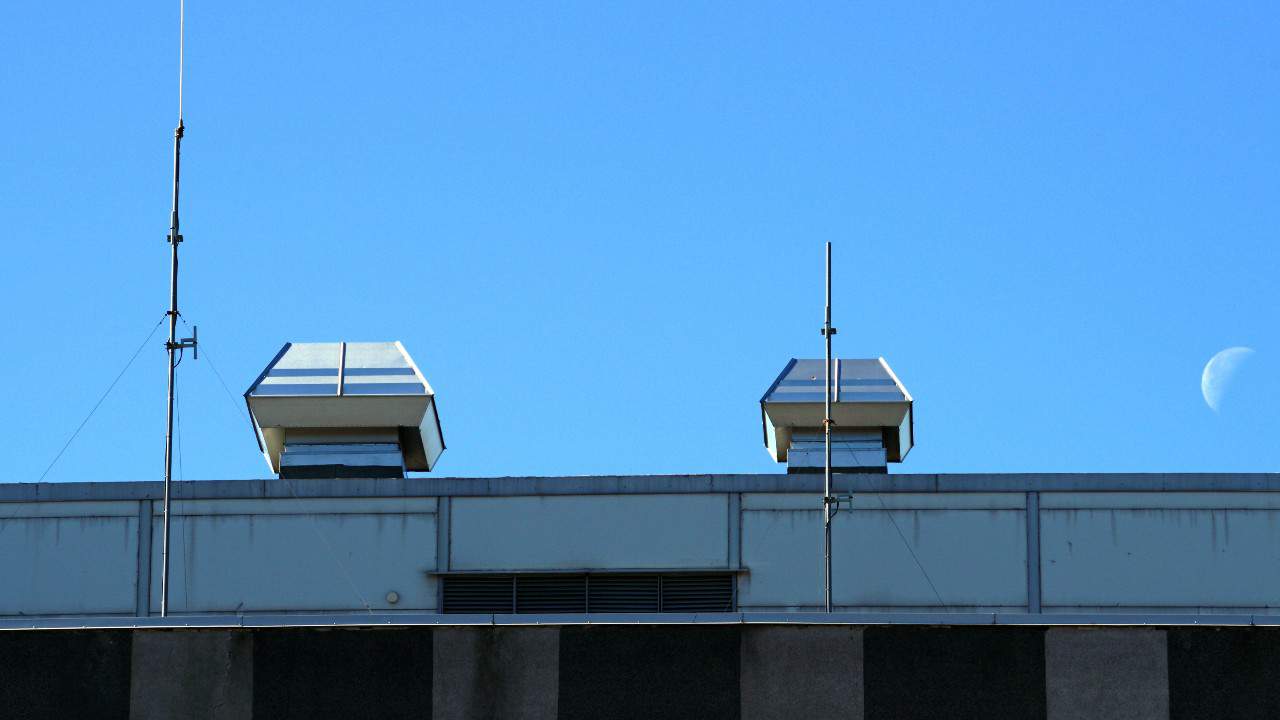
The second most common way you can go about setting up your bathroom venting system is by venting your bathroom fan directly to the roof.
If you choose this option, a roofer will install a special metal vent on your roof. This vent is commonly made out of stainless steel as it needs to be solid and durable enough to withstand the severe outdoor weather and exterior elements. A plastic wall vent simply wouldn’t do the trick here, as the plastic would become brittle and fragile due to the elements in just a few years.
Once again, the bottom part of this setup is a ceiling fan mounted in the bathroom. One thing to keep in mind with this venting method is that the duct hose used to guide the moist bathroom air to the outside needs to be adequately insulated.
Since the hose will most likely be going through the attic where the temperature is lower than inside your home, this temperature difference can cause condensation, which can lead to condensation and severe mold problems down the road. Mold can even cause the wood in your attic to rot, and it can also cause severe respiratory troubles for you and other people residing in your home.
To prevent the rainwater and animals from getting inside, roof vents have roof hoods, roof boots, or flashing at the end of the ductwork. Every roof vent comes with flanges underneath your roof shingles to prevent water from penetrating your home. Roof hoods and caps provide better protection than flashing and roof boots, just a rudimentary form of safety.
On the upside, a roof vent uses the fact that the hot air naturally rises to draw heat and moisture away from the rest of your home. This is also your best option if you have an attic since other venting systems such as soffit vents might redirect the hot and wet air from your home into the attic, and a roofing vent will help you get rid of that excess moisture.
On the downside, as its name suggests, a roof vent ends at your roof. This means that there is a possibility of this hole leaking in the future. Consider this one more reason why you should have a roofing professional take care of installing and setting up your roof vents.
For more information, check out our guide on how to install a bathroom fan roof rent.
Venting Through the Wall
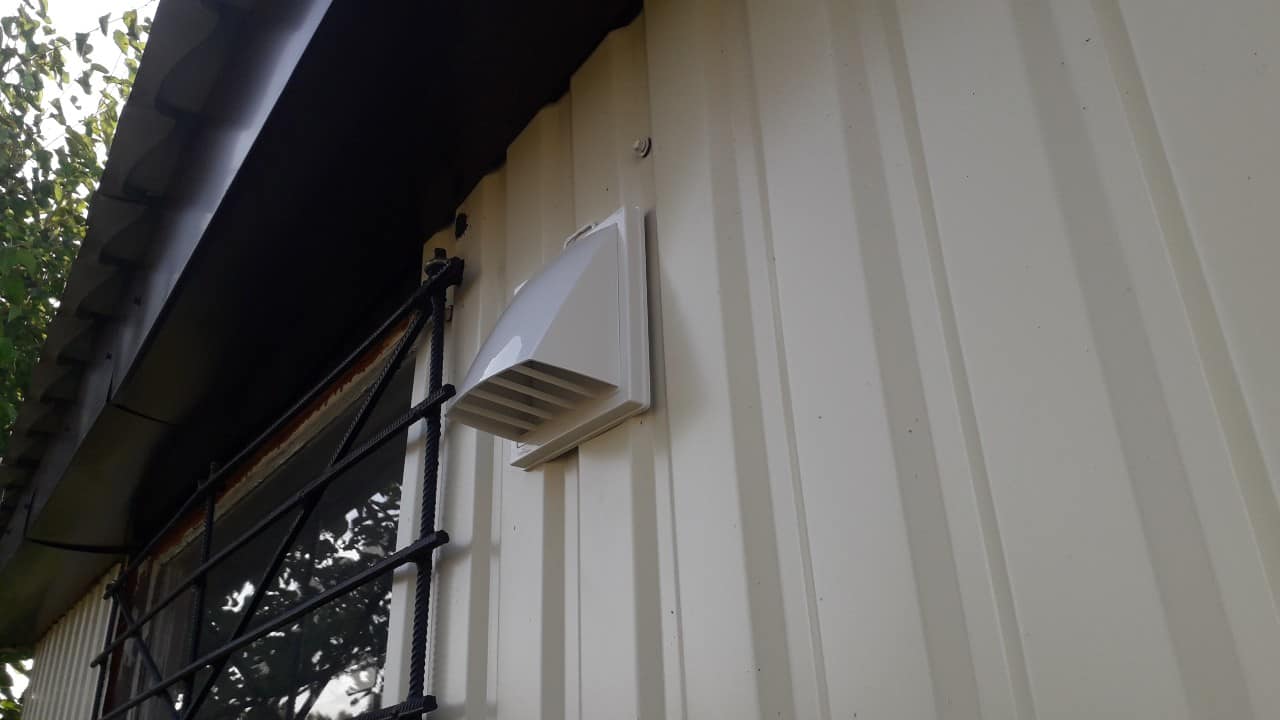
Through the wall venting option is the preferred method when the bathroom fan is installed vertically – rather than horizontally – inside a bathroom wall. Technically you can consider the aforementioned low-profile fan just another form of wall venting.
When it comes to setting up your bathroom exhaust fan, this might be the most straightforward option out there and the only viable DIY option. Through the wall, exhaust fans are usually sold as kits. Each kit comes with a short duct section and an exterior cover, plus pretty much everything you need to install it. Because of its ease of setting one up, these fans are not only found in bathrooms. Through the wall, venting options are also used in kitchens, garages, workshops, and many other locations throughout a house.
As you might have figured out on your own by now, these fans have a vent section that is only a foot or two long. They are meant to be mounted on an exterior wall and lead the humid air directly outside. There are no bends or turns, reducing the risk of condensation.
One more thing that makes these fans easy to set up and install is that the exhaust duct is located directly behind the exhaust fan – unlike other options where the exhaust comes to the side.
Low-profile fans are even thinner than their standard counterparts – that is where they got their name from. This quality makes them more manageable. So while you can lead a low-profile fan directly to the outside, you can also use it to guide the moist air through the walls of your home and even lead it up to the roof. Of course, the longer the vent is, the more room is there for potential problems so try to keep it as simple as possible.
Remember that even though this is the most convenient DIY option, it doesn’t come without its own set of risks. If you choose to install these vents by yourself, you should know where the studs, plumbing, and electrical wiring are located in your walls. You will be making a hole in your exterior wall, reducing room for a costly and potentially harmful mistake.
Also, since these fans let the wet air directly at your wall, there is a risk of potential issues with water stains and mold. So not only does this look ugly – but it can also lead to structural problems down the road. If this is not something that bothers you too much, this might be the ideal match of convenience and ease of setup for most people.
For more information, check out our post on how to install a bathroom vent through a wall.
Soffit Vent Installation
We have the soffit vent installation at the bottom of our list.
Soffit venting is a passive venting system. Its purpose is to allow the fresh air from the outside to enter your home through a vent located at the underside of your home’s eaves – or soffits. The outside air is meant to keep your home cool so you can already see how introducing the moist and hot air from your bathroom can be a cause for many problems and prevent this system from working properly.
Venting your bathroom fan through a soffit vent is far from ideal. It might interfere with your existing venting system and render it useless. That is why this option is not allowed everywhere. But if you have no other options at your disposal, a soffit vent installation will do.
If you pick this option, get unique soffit vents with spring-loaded covers. These are designed to snap shut once the air stops flowing to ensure that your soffit venting works properly and prevent birds and insects from getting inside your vents.
You can even install special fans with moisture sensors that turn on only when the moisture is too high in order to minimize airflow through the vents. Even then, a home inspector can write you up if they notice that your bathroom exhaust fans are connected to the soffit vent, so this option is far from ideal.
Why You Should Not Vent Your Fans Into the Attic
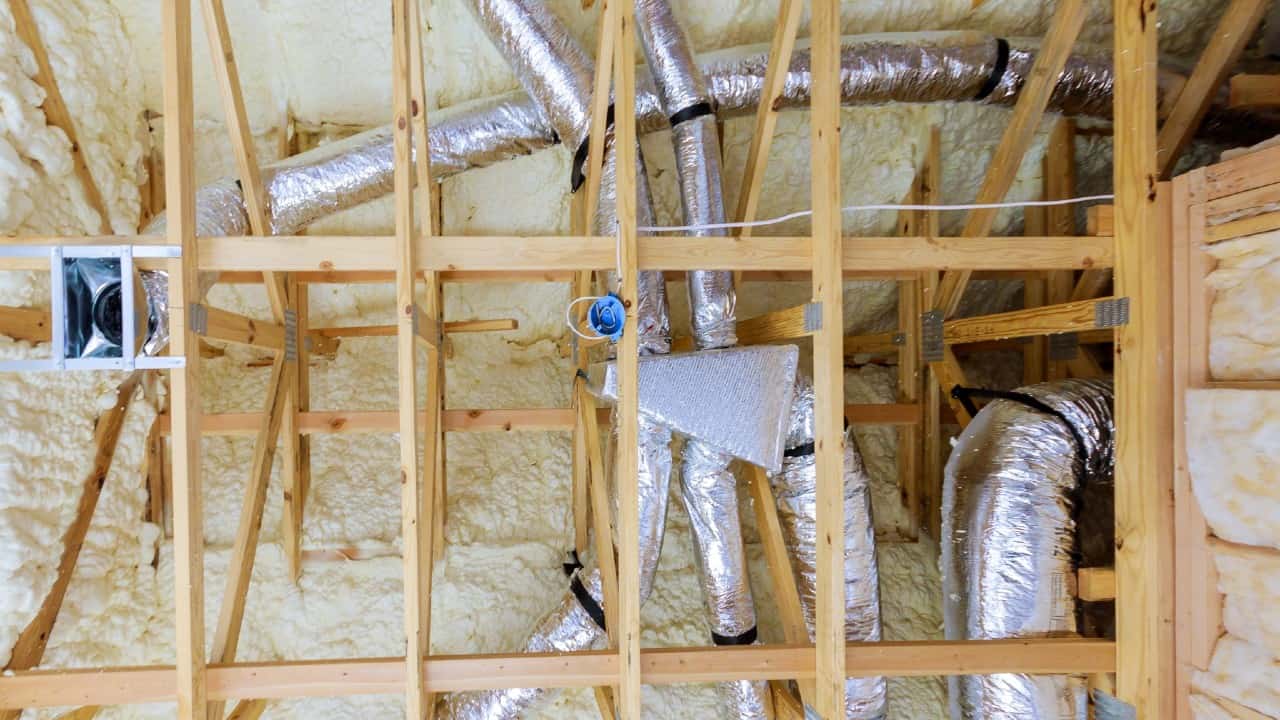
You have probably noticed that venting a bathroom fan into the attic is not listed as a viable option. This is because that is the worst thing you can do.
When you vent the bathroom fan into an attic, you simply ask for moisture damage at your home. Besides, this option reduces your home’s energy effectiveness since the air released from your bathroom tends to be warmer and thus increases the overall temperature of your home. If that is not enough, consider all the health risks associated with living in a damp environment.
Venting your fans to the attic comes with one more risk – the air that you expelled from your bathroom (or your home as a whole) can easily enter back inside. This defeats the purpose of a venting system while also making it easier for any contaminants from the air to re-enter your home.
Due to the reasons listed above, venting straight to the attic is prohibited nowadays. You might run into an older house that still has this system set up but keep in mind that it is not suitable for your home or health. Avoid this option if you can.
The only exception to this rule is the extremely warm and humid climates where the risk of condensation happening in your attic is relatively low or nonexistent. Even there this type of practice goes against the code but even some newer homes have this venting system in place.
However, even if there are no risks of mold forming, other important concerns – such as potential hazards to your health – still remain. Even if you live somewhere warm and humid, do all you can to stay away from this option. For instance, you can get a humidity-sensing bathroom fan.
If you are looking for something out of the ordinary, check out our post on the best bathroom exhaust fan with a Bluetooth speaker.
